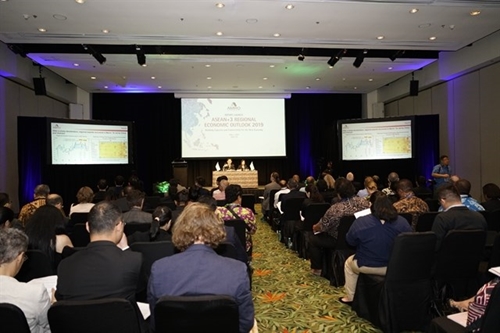May 02, 2019 | 21:51 (GMT+7)
ASEAN+3 economy to remain stable in long run despite risks
The economic growth of the ASEAN+3 region, including 10 member Southeast Asian nations and the Republic of Korea, Japan and China, is expected to remain resilient in the long run despite escalating global trade tensions and external headwinds, according to the latest report released by the ASEAN+3 Macroeconomic Research Office (AMRO) on May 1.
The ASEAN+3 Regional Economic Outlook 2019 quoted Dr. Hoe Ee Khor, AMRO Chief Economist, as saying while regional growth is softening to 5.1 percent in 2019 and 5 percent in 2020 from 5.3 percent in 2018, the long-term economic fundamentals remain intact.
    |
 |
|
Panelists speak at the AMRO seminar. |
“Regional policymakers should stand ready to use available policy space to ease monetary and fiscal policies to mitigate the downside risks and support the economy if external conditions were to worsen,” he said.
He suggested prioritizing longer-term policies, especially those focused on building capacity and connectivity to leverage the Fourth Industrial Revolution (Industry 4.0) and sustain growth in the new economy.
AMRO pointed out three key challenges to regional growth, including the funding, foreign exchange and factor gaps.
The funding gaps capture the shortfalls between the low domestic savings and large investment needs of lower-income economies.
The foreign exchange gap has to do with the financing constraints on emerging economies arising from the need to accumulate foreign reserves to mitigate risks related to sudden capital flows.
The factors gap captures non-financial constraints, including the need to develop human capital, expertise, technological capacity, and governance frameworks.
To address these challenges, ASEAN+3 economies need to leverage intra-regional savings and investments; strengthen regional financial safety nets, including the Chiang Mai Initiative Multilateralization (CMIM); and redouble efforts to develop the region’s technological capacity, professional expertise in various fields and institutions, according to the report.
Source: VNA